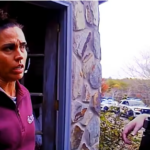






How Boring Playgrounds Stifle Play
I live in New York City. It’s green enough for me. But when I saw the work of Sharon Danks, CEO/founder of Green Schoolyards America, it became obvious that most playgrounds reflect how much we value – or don’t – kids’ playtime.
We sure do give them a lot of boring plastic.
We also give them a bizarrely short sliver of time to play at school in a nearly lunar landscape, and then we wonder why they don’t come back to class happy and renewed.
It’s like giving an employee a nutrient pill and 20 minutes in the break room and wondering why they don’t come back refreshed and brimming with ideas.
Playgrounds don’t have to sink the soul.
These before and after photos of playgrounds that have greened under Sharon’s watch will knock your socks – and shoes — off.
And if you want to be wowed to the point of envy, here’s the gigantic, fantastic natural playground at the Colene Hoose Elementary School in Normal, Illinois.
Now let’s look at this email sent by another brilliant lady worried about the state of play and playgrounds: Penny Wilson, in England.
Penny is a Playworker – she focuses on how to support children’s play. In an email thread, she started musing about the difference between a “kit” – that is, pre-fab playground equipment – and nature. I asked if I could run her note here (edited it down a bit), and voila!
MOST PLAYGROUNDS STIFLE PLAY, BY PENNY WILSON
I have been in Sweden working with a team that sees natural landforms and planting as the playground and any “kit” (swings, slides) as accessories, which may or may not be necessary.
Now, it is true that a child in Sweden is never far from water, shoresline, trees, and other wonders, and that the relationship between the playing child and nature is forehead-slappingly obvious.
But the work being done in Sweden lends itself to a complete rethink of what a “playground” is.
Humans evolved, like beetles, squirrels, and moose, as creatures in the natural world. Just another part of the ecosystem.
A complex ecosystem creates complex thinking.
Within that ecosystem children needed to be able to navigate to survive and thrive. This involved not only physical clambering and such, but eating, washing stuff, shelter, fire, digging, copying adults who had already found out valuable bits of information, inventing solutions on the hoof to problems that cropped up… They did this through constant, varied and intensive playing.
But it seems to me that in the light of a crisis of play deprivation and our climate emergency, one obvious solution is to find ways to focus less on artificial, very limiting structures that provide for only locomotor play, which is a tiny part of what play is, only one of the sixteen or so different play types that we use in Playwork theory to audit the environments with which we support children.
Boring playgrounds sell kids short.
To focus on this one element, to the literal exclusion of all others, to call it a complete play experience, to claim that play can only happen where the officially sanctioned (and paid for) kit to do it has been plonked? That, my friends, is bonkers.
So, my aspiration is that we can begin to understand play as a simple/complex natural process that needs a natural environment.
It may be that I have finally found myself dwelling entirely in cloud cuckoo land. But honestly, I look at most of what a colleague used to call ‘dys-playgrounds’ and wonder what planet I am on.
Engage the senses if you want fewer sensory issues.
They have nothing to do with the innate play drive of our species. Nothing of beauty, subtlety, wit, and the unique creativity of new human lives.
Sensations coming from slipping down a muddy bank or a silky grass hillside, balancing along logs over water or mud.
Climbing in trees or rock formations. Bouncing on branches (see-saw/teeter-totter).
Swinging from willow branches… see where I am going with this?
Shout me down if you will, but I’m staying in cloud cuckoo land. I prefer it there! – P.W.
LET GROW HERE: If you can’t green your schoolyard (yet), one way to make it more varied and play-ful is to include “loose parts.” These can be anything from balls and hula hoops to old tires, typewriters, and, of course, cardboard boxes. Here’s a loose parts Let Grow Play Club that may inspire you!



Comments are closed for this article.